Invented by Daniel Joseph Sullivan, Individual
The market for computerized risk management modules for medical diagnosis is growing rapidly. According to a report by MarketsandMarkets, the global healthcare risk management market is expected to reach $2.08 billion by 2022, growing at a CAGR of 11.7% from 2017 to 2022. This growth can be attributed to the increasing need for healthcare providers to manage risks associated with medical diagnosis and treatment.
Computerized risk management modules for medical diagnosis are designed to help healthcare providers identify and manage risks associated with medical diagnosis. These modules use advanced algorithms and machine learning techniques to analyze patient data and identify potential risks. They also provide healthcare providers with real-time alerts and recommendations to help them make informed decisions about patient care.
One of the key benefits of computerized risk management modules for medical diagnosis is that they help healthcare providers reduce the risk of medical errors. Medical errors can have serious consequences, including patient harm and legal liability. By using computerized risk management modules, healthcare providers can identify potential risks before they become a problem and take steps to mitigate them.
Another benefit of computerized risk management modules for medical diagnosis is that they help healthcare providers improve patient outcomes. By identifying potential risks and providing real-time recommendations, these modules can help healthcare providers make more informed decisions about patient care. This can lead to better outcomes for patients and improved patient satisfaction.
In conclusion, the market for computerized risk management modules for medical diagnosis is growing rapidly. These modules are designed to help healthcare providers manage risks associated with medical diagnosis and treatment. They use advanced algorithms and machine learning techniques to analyze patient data and provide real-time alerts and recommendations. By using computerized risk management modules, healthcare providers can reduce the risk of medical errors and improve patient outcomes. As the healthcare industry continues to evolve, computerized risk management modules will play an increasingly important role in managing risks associated with medical diagnosis.
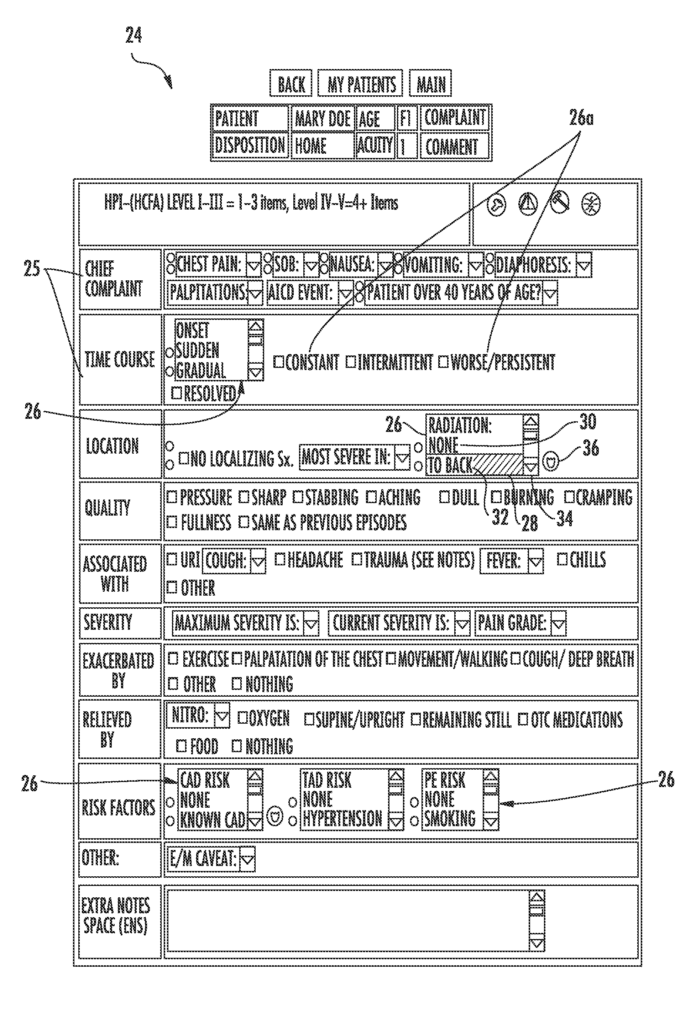
The Individual invention works as follows
A method and an apparatus are provided to improve the medical care of patients. The apparatus includes an input device and a database of medical risks, a data processor, as well as a communication device. The input device stores data about a patient, which is usually entered by a healthcare professional. The medical risk database associates certain patient information with the data record. This increases the chance of missing a medical care opportunity and provides additional medical care. A communication device is used to respond to patient data that presents a medical risk. It communicates to a health professional additional medical care to be able to recognize and take advantage of an opportunity for medical care.
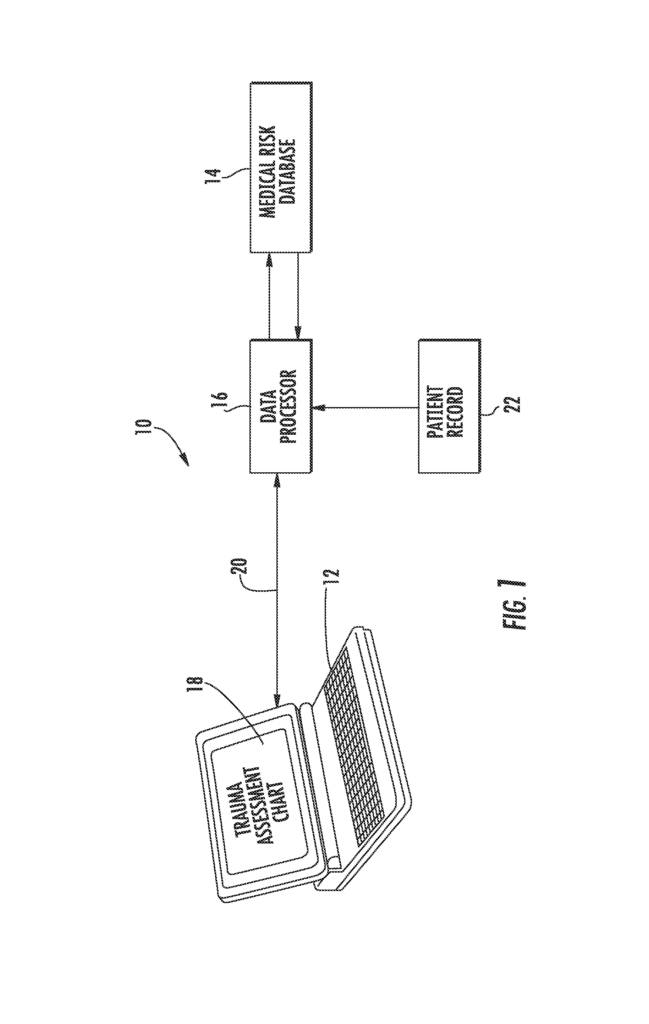
Background for Computerized risk management module for medical diagnosis
?Health care professionals? This term is broadly used to describe anyone involved in diagnosing or treating medical problems. This term includes, for example, doctors, dentists and nurses, as well as nurse-practitioners and medical technologists.
A health care professional diagnoses a patient by gathering and evaluating the information, then determining the best disease or condition to treat the patient. The patient’s information is usually processed to determine a diagnosis using a protocol that the professional has learned in their professional training. This protocol can then be modified and updated by the doctor’s medical experience. A protocol is a process that allows a health professional to determine information that will allow them to rule out potential diseases and then gather enough information to eradicate all other conditions. The protocol can also be terminated when the appropriate treatment is determined. Recent protocols have been established by hospitals, medical associations, and health maintenance organizations. Mandated protocols are frequently used to guide health care professionals who work for them.
One of the problems in medicine is how to improve diagnostic protocols in order to account for medical advances. Another problem is how to make sure that health care professionals are updated to benefit from medical advances. Another problem is how to speed up the diagnosis and treatment for certain conditions that must be treated quickly so that treatment can start as soon as possible to be most effective.
U.S. Pat. No. No. 6,095,973 describes a data processing method and method for evaluating chest pain patients in a hospital.
U.S. Pat. No. No. 6,029,138 describes a decision support system that allows for the selection of a diagnostic or therapeutic test. In that patent
U.S. Pat. No. No. 4,857713, which describes a program to reduce hospital errors in the delivery or goods, procedures, or medications for patient treatment.
U.S. Pat. No. No. 5,732,397 is an automated decision-making system that can be used to improve quality and consistency.
U.S. Pat. No. No. 5,772,585 reveals a common user interface that allows different medical personnel to access centralized files concerning patients.
U.S. Pat. No. No. 5,832,450 is an electronic medical record system that stores information about individual patient encounters in a simple form.
U.S. Pat. No. No. 5,845,255 is an electronic prescription system for physician use. It includes an adverse indication review, online access to complete drug information, and scientific literature.
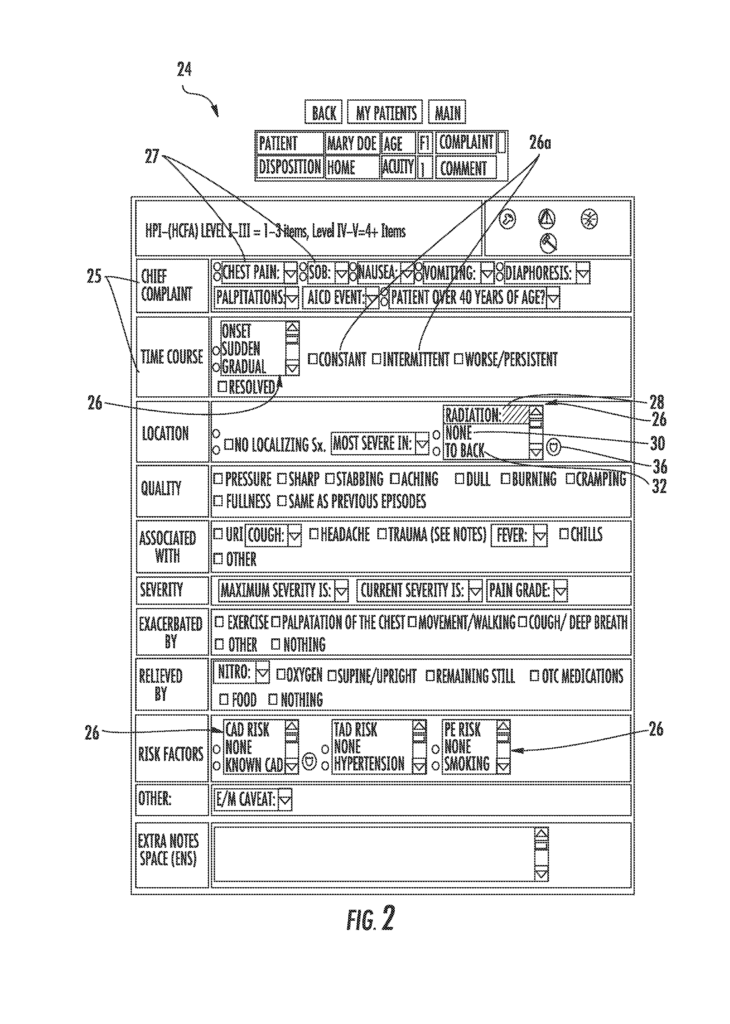
U.S. Pat. No. No. 5,911,132 describes diagnosing and treating patient disease using an epidemiological database that contains medical, personal, or epidemiological data relevant for a given set of symptoms, test results (diagnosis), etc.
U.S. Pat. No. No. 5,915,240 describes a context-sensitive computer system that allows for the access to medical information over a network.
U.S. Pat. No. No. 5,924,074 describes a medical record system that creates and maintains all patient data electronically.
U.S. Pat. No. No. 5,953,704 describes a system where a user enters information about the health of an individual.
U.S. Pat. No. No. 6,022,315 describes a system and method to provide computerized, knowledge-based treatment and diagnostic advice to the general population over a telephone network.
Currently, there is a need for a medical system that communicates with a doctor carrying out a diagnosis. This will alert the physician to the possibility of missing a medical care opportunity that could lead to a less favorable outcome. (A “medical care opportunity” is defined as a chance to diagnose or treat a patient’s condition more accurately and quickly. (A?medical care opportunity?) is a chance to diagnose or treat a patient’s condition more accurately and quickly, thus ensuring a better outcome for the patient. A system to communicate to health care professionals specific steps to be taken to prevent missed opportunities in medical care is needed.
One aspect is an apparatus to improve the medical care for patients.” The apparatus comprises an input device, a database of medical risks, a data processor and a communication device.
The input device may be any device that can be used to enter medical data about a patient. The input device records patient data.
The medical risk database associates some patient data which increases the likelihood of missing a medical care opportunity with additional medical care. An additional medical care is a predetermined action which reduces the chance of missing a medical care opportunity, regardless of the patient data.
The data processor programs the data processor to compare the patient record and the medical risk database. This is done to determine if there are any patient data that could increase the chance of missing a medical care opportunity.
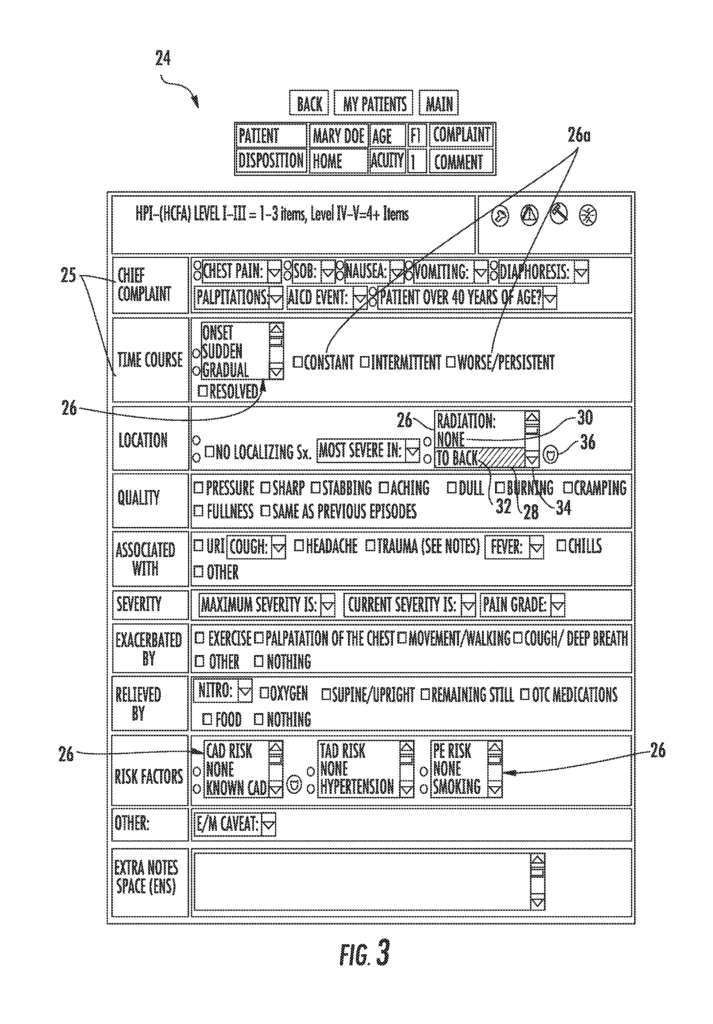
The communication device detects patient data and responds accordingly. This increases the chance of missing a medical care opportunity. The communication device communicates additional medical care to a health professional. To reduce the chance of missing a medical care opportunity, additional medical care was chosen.
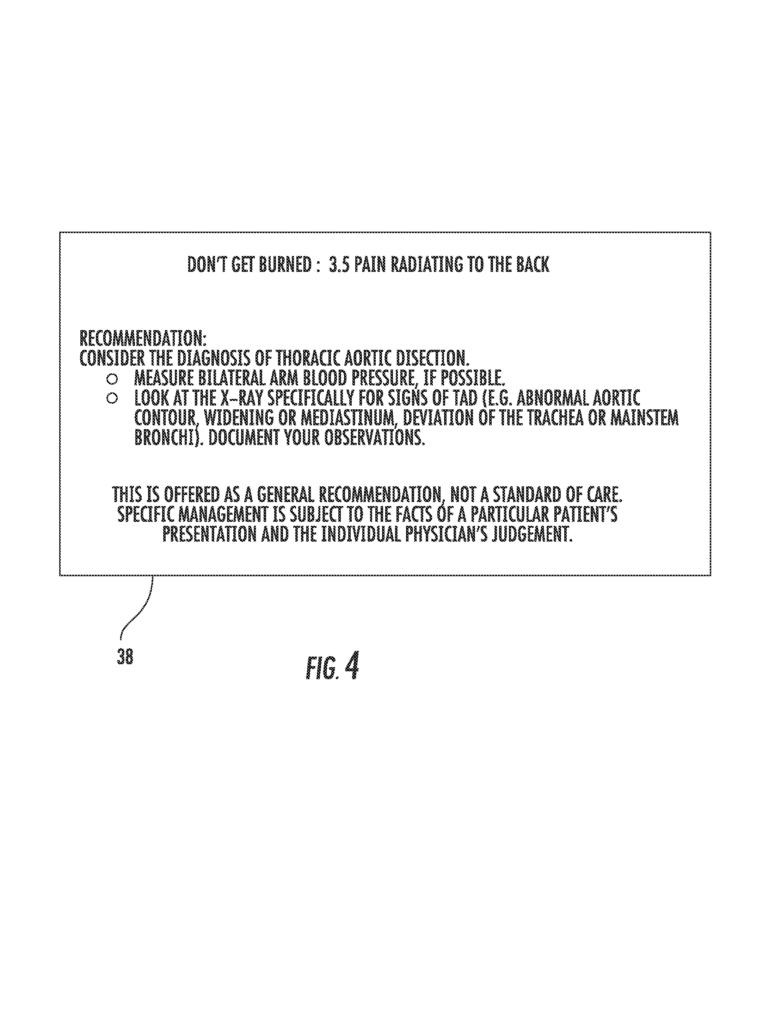
Click here to view the patent on Google Patents.
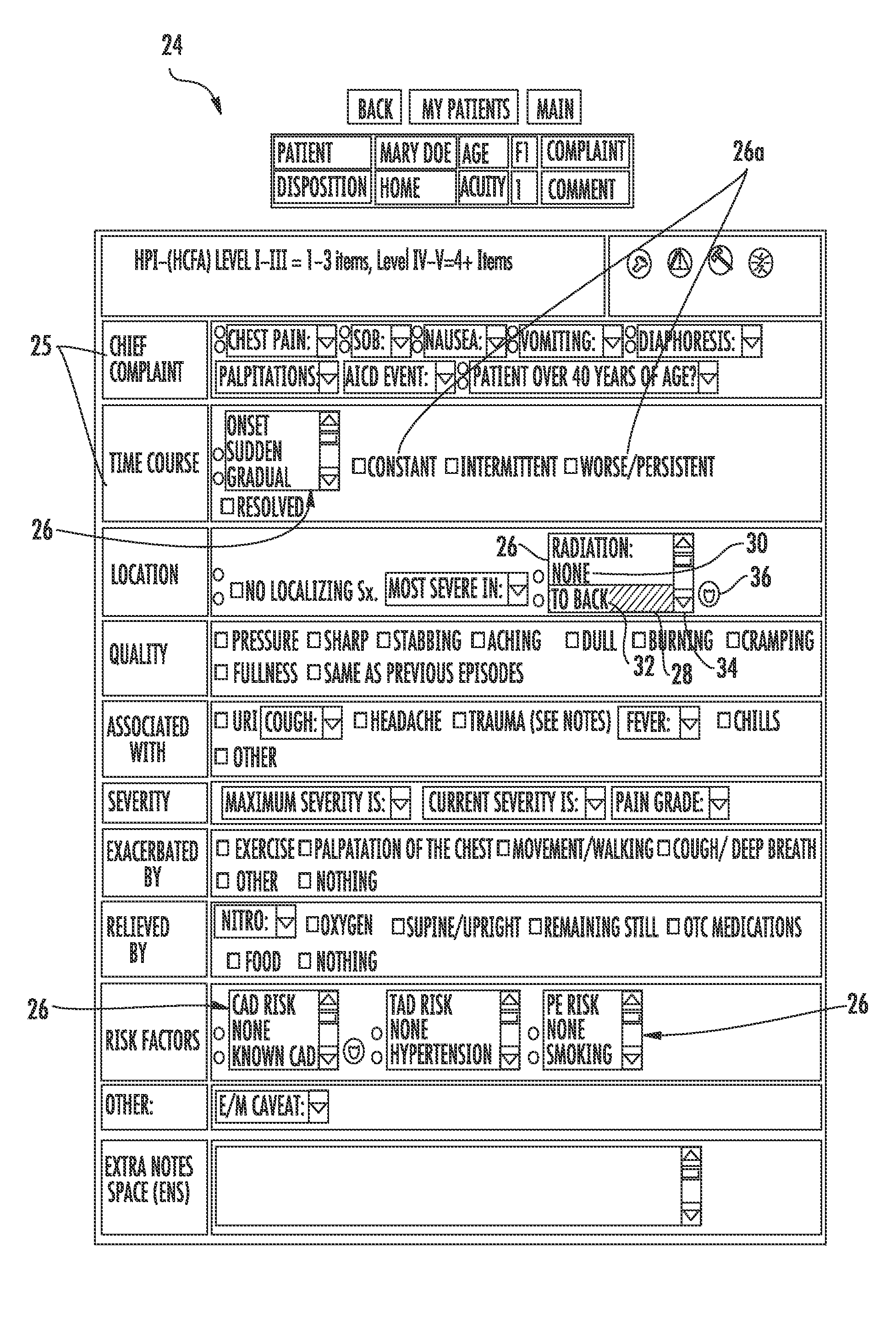
Leave a Reply